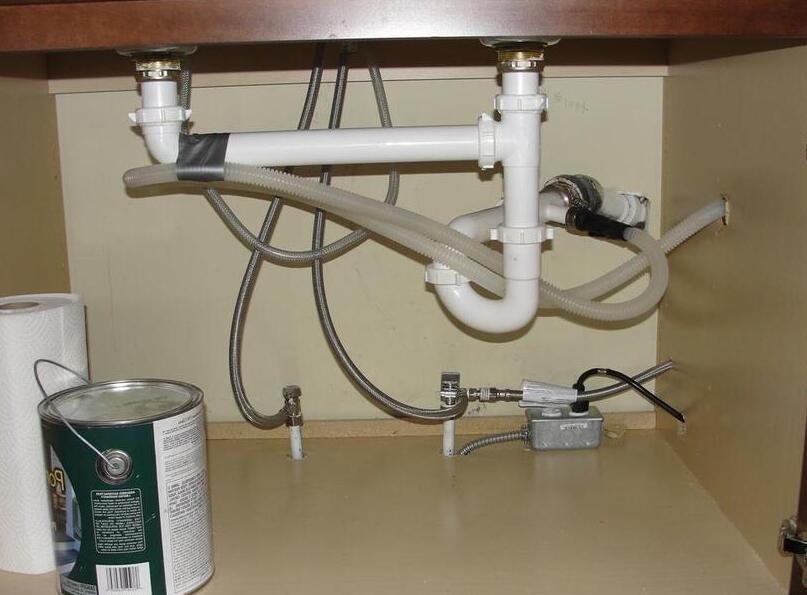9 tips to tackle dishwasher draining problems
If you’ve ever had your dishwasher drain into a puddle on the floor or stop up entirely, then you know all about the frustration of dealing with a clogged dishwasher. If you’re tired of having to call out a plumber for this problem every time it happens and would rather learn how to fix it yourself, read on and we’ll show you how.
1. Make sure the dishwasher is level.
A dishwasher that isn’t level will cause water to collect at one end. Check for this by placing a straight-edged object (like the back of a butter knife) along the front edge of the tub. Do not use anything flexible because it could kink, which may prevent the door from closing evenly. Set the leveling legs till the dishwasher is completely level.
2. Get rid of any water puddles.
If there are puddles of water on the floor after you run your dishwasher, then something has gone wrong with its draining system. Check for this by removing the drain hose from the sink’s faucet and turning the dishwasher on. If water flows out of the hose, then you need to remove these puddles before they affect your next cycle.
3. Check for kinks and clogs in the drain hose.
The most common cause for a problem with dishwasher water draining is a blockage in the hose that connects it to the sink. Check for blockages by removing the drain hose from the dishwasher and sink and looking through it with a flashlight. If you see any particles, then these need to be removed before your dishwasher drains properly again.
4. Take apart the air gap if necessary.
If there is a clog in both the drain hose and the dishwasher’s drain, then you might need to disconnect the air gap connected to the sink. This is a small component that prevents water from flowing out of your faucet when it is not supposed to and protects you from flooding. It usually looks like a white disk connected between your sink and faucet.
To remove it: Screw the disk to the side. Unscrew the screws holding it in place. Pull it out of its slot.
Note that you will need to put this back into place before using your sink again or you can experience flooding!
5. Clean out any remaining particles with a soft brush and replace the air gap if necessary.
After removing the air gap, clear away any remaining debris and put the component back in its place if it needs to be. If you cannot find any debris, then the problem has been fixed and your dishwasher should drain normally again!
6. Put the dishwasher’s drain hose back into its place if it is not already there.
If you have experienced a leak from this part of your dish washing system, then you can easily fix it by putting the drain hose back where it belongs. To do so:
Flush the drain hose with warm water. Be sure to clear all of the gunk inside it away with your fingers or pliers if necessary. Leave it to fully dry before fixing it. Make sure that is does not get obstructed by anything once you put it back into its slot.
7. Use a water heater timer to ensure proper drainage time.
If you notice that your dishwasher is still not draining properly even after it has been put back together, then you may need to check your water heater’s timer. If required, click the “Reset” button on the top panel.
But if it will not resolve the issue, power off your water heater and wait 24 hours. Check if it is on again and then try the “Reset” button once more. If that still does not work, replace your timer with a new one!
8. Assure the drain pump isn’t clogged.
If you have checked all of these issues and are still experiencing draining problems, then there may be something wrong with your dishwasher’s drain pump. This is a small component that pulls water in through the drain hose when it’s time to empty the basin after a cycle. To remove it:
Pull out the dishwasher’s spray arm if it is in the way. Unscrew any screws that are holding the pump in place and remove it from its slot. Pull off its power cord if necessary. Take apart any pieces of plastic tubing connected to it. Clear away anything preventing a thorough inspection of the drain pump by brushing them aside with a soft brush.
If you notice anything wrong with the pump while inspecting it, then try to fix it yourself by replacing any broken pieces and putting the pump back together again. Otherwise, call in a plumber to get your dishwasher working normally again!
9. Call in a professional if none of these steps work and you cannot fix the problem yourself.
If the dishwasher continues to drain poorly after you have tried all of these steps, then it is time to call in a plumber. And if you are looking experienced plumber in Toronto then call Toronto Plumber immediately. By doing so, you not only get your dishwasher working properly again, but you save yourself hours of time trying to fix something you do not know how to repair.
Conclusion
If you’re still having trouble with your dishwasher’s drainage, try these tips. These will not only help clear out any clogs but also keep the pump from getting blocked as well. These simple steps will help you to quickly and easily fix common problems that crop up with a dishwasher’s draining system.
However, when these solutions do not resolve the issue, it may be essential to hire a plumber. Sometimes a professional may need to be called in if it all goes wrong and none of the steps work for you or fix the problem by themselves. Good luck!
Vanshika Aggarwal

